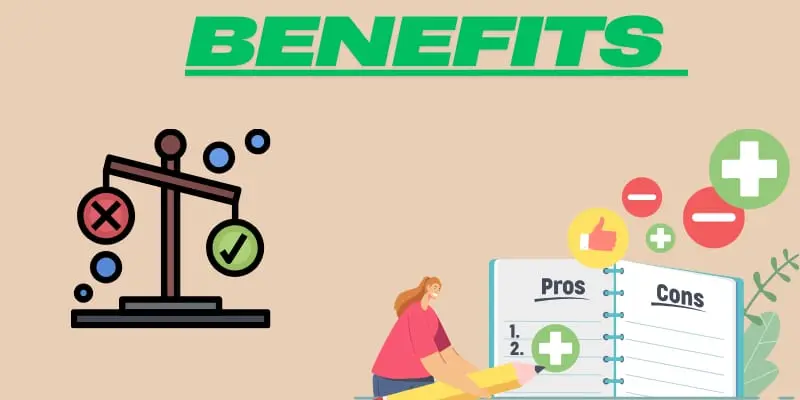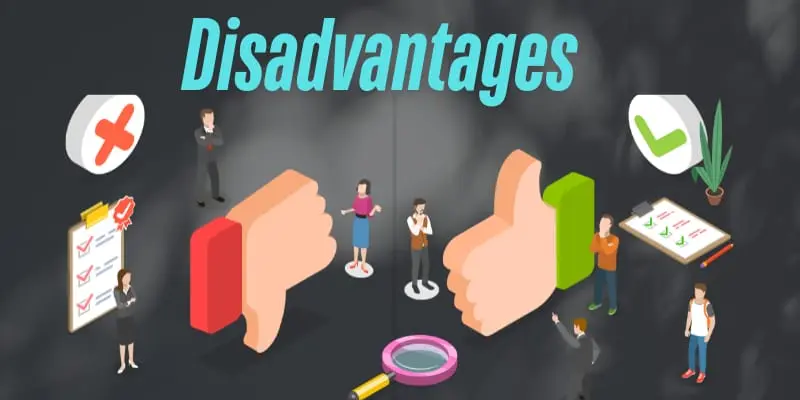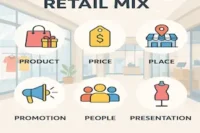What Does MAP Mean In Retail? Pros, Cons + How to Create?
Published: 21 Feb 2025
Hey guys!
Have you ever wondered what a MAP means in retail? If so, don’t worry; I’m here to guide you through everything about MAP.
In retail, a MAP simply stands for Minimum Advertised Price.
It is the lowest price of a product set by brand owners or manufacturers for resellers to advertise their goods.
In case of any violation, brand owners can take legal action against retailers.
But guys, do you know why it’s important? What benefits does MAP offer to retailers? no? dont worry here i shared everything about MAPs in retail.
Here is what you will learn in this guide.
What Does MAP Mean In Retail? Why Is It Important?

As previously shared, the Minimum Advertised Price is a rule set by brands to control how their products are advertised.
Guys let me tell you one main thing,
- It’s not about the actual selling price—it’s about the price shown in ads, online listings, or flyers.
For example, if a brand sets the MAP for a pair of headphones at $100, retailers can’t advertise or list them for $80.
However, they can still sell them for $80 in-store or at checkout, but publicly they will claim it’s a $100 product.
That’s said!
If you are looking for why well-known brands and manufacturers create Minimum Advertised Price (MAP), so be ready. I’m gonna give you the answers to your questions.
Well-known brands and manufacturers create MAP policies because,
- It protects the brand’s image and value. If products are always shown at low prices, customers might think they’re cheap or low-quality.
- It keeps competition fair. Big stores can’t use super low prices to push smaller stores out of business.
- It builds trust with customers. When prices are consistent, shoppers feel more confident about the product’s value.
- It helps retailers maintain better profit margins. Without MAP, constant price wars can hurt everyone’s earnings.
- It strengthens relationships between brands and retailers. Following MAP rules shows respect and professionalism.
Got it? MAP is a win-win for brands, retailers, and even shoppers!
Is MAP Policy Legal?
Yes, MAP (Minimum Advertised Price) policies are legal, but there’s a catch.
MAP only controls the advertised price of a product, not the actual selling price.
This means brands can set rules about how their products are shown in ads, online listings, or flyers, but they can’t tell retailers or set rules about what price to sell the product for.
As long as MAP policies focus on advertising and don’t restrict actual sales prices, they’re perfectly legal.
However, brands must be careful not to cross the line into price-fixing, which is illegal.
So, MAP is a safe and effective way for brands to protect their image and keep competition fair!
How to create and Enforce a MAP policy.
Creating and enforcing a MAP (Minimum Advertised Price) policy doesn’t have to be complicated.
Here’s a simple step-by-step guide to help you get started:
- Define your MAP rules: Clearly state the minimum advertised price for each product. Make sure the rules are easy to understand.
- Put it in writing: Create a formal MAP policy document and share it with all your retailers. Include details like consequences for violations.
- Communicate with retailers: Explain the policy to your retailers and why it’s important for both your brand and their business.
- Use monitoring tools: Invest in software or services (if applicable) that track online ads to ensure retailers are following the rules.
- Enforce consistently: If a retailer breaks the policy, take action immediately. This could be a warning, suspension, or stopping shipments.
- Review and update: Regularly review your MAP policy to make sure it’s working and update it as needed.
Following these steps, you can create a strong MAP policy and enforce it effectively!
MAP vs. MSRP
MAP (Minimum Advertised Price) and MSRP (Manufacturer’s Suggested Retail Price) are both pricing strategies used in retail, but they serve different purposes.
Here’s a simple breakdown to help you understand the difference:
- MAP: This is the lowest price a retailer can advertise a product for. It doesn’t control the actual selling price—just the price shown in ads, online listings, or flyers.
- MSRP: This is the price the manufacturer suggests retailers sell the product for. It’s more of a recommendation and doesn’t have to be followed strictly.
For example, if a product has a Manufacturer’s Suggested Retail Price (MSRP) of $100 and a MAP of $80:
- Retailers can’t advertise the product for less than $80 (MAP), But can sell it for any price they want,
- While $100 is just Manufacturer’s Suggested Retail Price) (MSRP), retailers can sell the product at any price they want.
In short, MAP controls advertising, while MSRP is a suggested selling price.
Both help brands maintain consistency, but they work in different ways!
What Are the Benefits of MAP

MAP (Minimum Advertised Price) policies are powerful policies for brands to hold their respect and value.
Here’s a detailed breakdown of their benefits:
- Protects brand value and image: MAP ensures products are advertised at consistent prices, preventing them from being seen as cheap or low-quality. Stable pricing builds trust and reliability with customers.
- Creates fair competition: MAP stops larger retailers from using aggressive discounts to push smaller competitors out of the market. It levels the playing field, allowing small and medium-sized businesses to thrive.
- Builds customer trust and confidence: Consistent pricing helps shoppers feel confident they’re getting a fair deal. It eliminates confusion caused by wildly fluctuating prices across different sellers.
- Improves profit margins for retailers: MAP prevents price wars, which can erode profits for everyone. Retailers can focus on selling value rather than competing solely on price.
- Controls online pricing and protects against unauthorized sellers: MAP prevents third-party sellers from advertising products at unfairly low prices, which can damage the brand’s reputation. It helps maintain pricing consistency across e-commerce platforms.
- Encourages retailers to compete on service, not just price: When price competition is limited, retailers focus on offering better customer service, faster shipping, or unique shopping experiences. This creates a better overall experience for customers.
- Simplifies pricing strategies for brands: Brands don’t have to constantly monitor or adjust prices to compete with unauthorized discounts. It makes it easier to plan marketing campaigns and promotions.
- Supports long-term brand loyalty: Customers are more likely to stick with a brand when they feel the pricing is fair and consistent. It builds a loyal customer base that trusts the brand’s value proposition.
Briefly, MAP is a win-win strategy that protects brands, supports retailers, and builds trust with customers.
What Are the Disadvantages of MAP?

While MAP (Minimum Advertised Price) policies offer many benefits, they also come with some challenges.
Here are some downsides of MAP.
- Can limit retailer flexibility: Retailers may feel restricted in how they advertise or promote products, which can limit their ability to attract price-sensitive customers.
- May lead to lost sales: If customers find a product advertised at a higher price than they’re willing to pay, they might choose a competitor’s product instead.
- Enforcement can be difficult: Monitoring and enforcing MAP policies across multiple platforms and retailers can be time-consuming and costly, especially for smaller brands.
- Risk of alienating retailers: Strict MAP enforcement can strain relationships with retailers, especially if they feel the policy is unfair or too restrictive.
- Less effective for small brands: Smaller brands may struggle to enforce MAP policies, as they often lack the resources or influence to monitor and penalize violations. In addition, if small brands enforce MAP rules, they will likely lose significant sales.
- Challenges with online marketplaces: Third-party sellers on platforms like Amazon or eBay may ignore MAP policies, making it harder to maintain consistent pricing. This issue usually faces brands that are not well known.
Hey! My Dears.
So, in this article, we’ve covered everything about “what MAP means in retail.
Hey! My Dears.
So in this article, we’ve covered everything about “what does MAP mean in retail.”
From understanding the basics of Minimum Advertised Price to exploring its benefits, challenges, and how it compares to MSRP, we’ve broken it all down in simple terms.
Creating MAP is a powerful strategy that helps brands protect their value, keep competition fair, and build trust with customers.
While it has its challenges, like enforcement difficulties and limited retailer flexibility, the benefits often outweigh the drawbacks when implemented correctly.
If you have more questions or need further guidance, feel free to ask in the comment sections below, our team will reply to you as soon as possible.
More Queries?
Some questions related to Minimum Advertised Price.
What is the purpose of MAP in retail?
MAP policies help maintain a product’s value by setting a minimum advertised price. This prevents price wars between retailers and ensures fair competition. It also protects a brand’s reputation by keeping pricing consistent.
Can I sell below the MAP price if I don’t advertise it?
Yes, MAP policies only regulate the advertised price, not the final sale price. You can sell below MAP in-store or through private offers. However, publicly advertising a lower price may violate the policy.
Are MAP policies legal everywhere?
MAP policies are legal in many countries, including the United States, as long as they regulate advertising, not sales. However, the laws may differ in regions like the European Union. Always check local regulations before implementing or following MAP agreements.
What happens if I violate MAP policies?
Manufacturers may issue warnings, reduce your supply, or even end their partnership with you. Repeated violations can harm your business relationships and reputation. It’s best to comply to maintain good standing with suppliers.
How is MAP different from MSRP?
MAP is the lowest price you can advertise, while MSRP (Manufacturer’s Suggested Retail Price) is the price manufacturers recommend selling at. Retailers can sell at or below MSRP, but MAP controls only advertising. Both work together to protect a product’s value.
Who monitors MAP compliance?
Manufacturers or their representatives often monitor retailer pricing online and offline. Some use software tools to track violations automatically. If they find violations, they may notify you directly.
Does MAP apply to online stores?
Yes, MAP policies apply to both physical stores and online platforms. They are especially important for e-commerce because online pricing is more visible to customers and competitors. This ensures fair competition across all sales channels.
What products usually have MAP policies?
High-value products, electronics, luxury items, and branded goods often have MAP policies. These products rely on consistent pricing to maintain their premium image. However, MAP can apply to any product a manufacturer wants to protect.
Can MAP policies hurt small businesses?
Not necessarily—MAP policies can protect small retailers by preventing larger stores from undercutting prices. This ensures a level playing field for all retailers. However, strict enforcement may feel limiting for some small businesses.
How can I ensure I comply with MAP policies?
Read and understand the agreements provided by manufacturers. Use software tools to monitor competitor pricing and avoid unintentional violations. If you’re unsure about advertising a price, consult the manufacturer for clarification.

- Be Respectful
- Stay Relevant
- Stay Positive
- True Feedback
- Encourage Discussion
- Avoid Spamming
- No Fake News
- Don't Copy-Paste
- No Personal Attacks



- Be Respectful
- Stay Relevant
- Stay Positive
- True Feedback
- Encourage Discussion
- Avoid Spamming
- No Fake News
- Don't Copy-Paste
- No Personal Attacks




